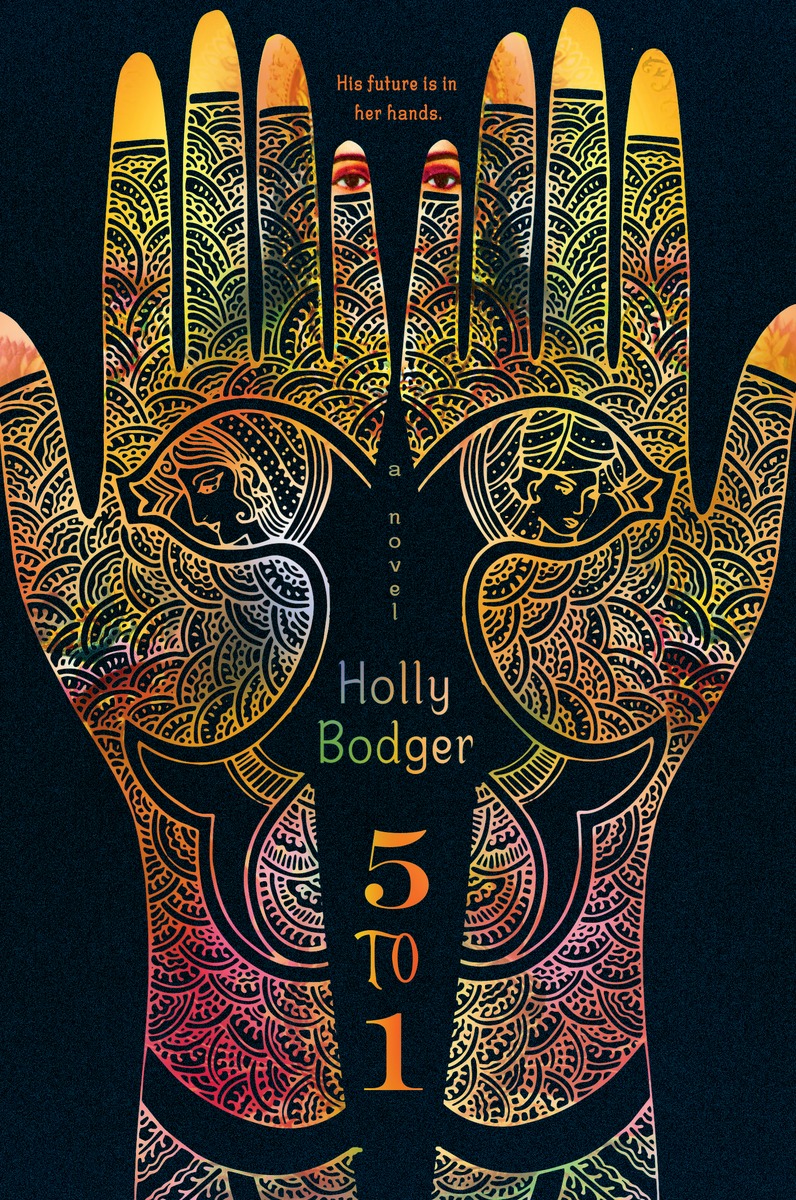| ________________
CM . . .
. Volume XXII Number 2. . . .September 11, 2015
excerpt:
What happens when there aren’t enough girls in the world? That’s the scenario Holly Bodger explores in her dystopian young adult novel, 5 to 1. Speculating on the horrifying possibility of what might happen if India’s female infanticide rate were to accelerate until there were five boys for every one girl, 5 to 1 is a chilling examination of gender equality and power struggles. Readers aged 12 through 18 will enjoy this novel told in alternating voices: girl and boy; verse and prose. 5 to 1 is set in Southern India in the year 2052, when there are five boys for every one girl. However, this imbalance has not rendered girls more empowered or independent—only more valuable commodities. Families with girls are rewarded financially, but the daughters of these families must participate in a state-run series of tests when they turn 17. They are obligated to marry the winning boy in order to produce more female offspring. While the tests allegedly provide all boys in Koyanagar with an equal opportunity to marry, Sudasa, a girl from a powerful, wealthy family, learns that they are far from fair. Sudasa is being pressured by her grandmother, a formidable matriarch, to choose her cousin—who not-so-coincidentally ended up in her test group—for complex reasons related to family politics. However, she becomes intrigued by Kiran, another of the boys in her test group. Their relationship develops through the course of the tests, with Sudasa helping Kiran to remain a contender despite the many shortcomings his lower socioeconomic status brings. He ultimately returns the favour in an unexpectedly deviant manner. Revealing how each of these main characters interprets and reacts to their situation is the greatest strength of 5 to 1. Sudasa’s spare verse and Kiran’s in-depth prose reveal different experiences viewed through different lenses, yet very similar attitudes towards justice and gender equality. In their own ways, each is appalled by the discrepancies they observe in their society and determined to overcome them, if only on an individual level. 5 to 1 is plagued by a few minor flaws. In its dystopian world-building, it bears a few too many similarities to heavy hitters, such as The Hunger Games; tests, random lotteries, girls as objects on display for the crowd, and rebellion loom large. Further, the verse chapters rely unevenly on some overly familiar elements of concrete poetry which, rather than adding to the poems’ impact, distract and detract from it. Nevertheless, 5 to 1 is a powerful, compelling, and unique exploration of what could happen in a society with extreme gender imbalances. The emotions and power structures ring true, and the characters are intriguing and believable: they command empathy. Further, the plot is fast-paced, making for an impossible-to-put-down reading experience. Teachers interested in social justice issues and teens looking for a captivating read will enjoy this book. Highly Recommended. Michelle Superle is an Assistant Professor at the University of the Fraser Valley where she teaches children’s literature and creative writing courses. She has served twice as a judge for the TD Award for Canadian Children’s Literature and is the author of Black Dog, Dream Dog and Contemporary, English-language Indian Children’s Literature (Routledge, 2011).
To comment
on this title or this review, send mail to cm@umanitoba.ca.
Copyright © the Manitoba Library Association. Reproduction for personal
use is permitted only if this copyright notice is maintained. Any
other reproduction is prohibited without permission.
Next Review |
Table of Contents for This Issue
- September 11, 2015. |
